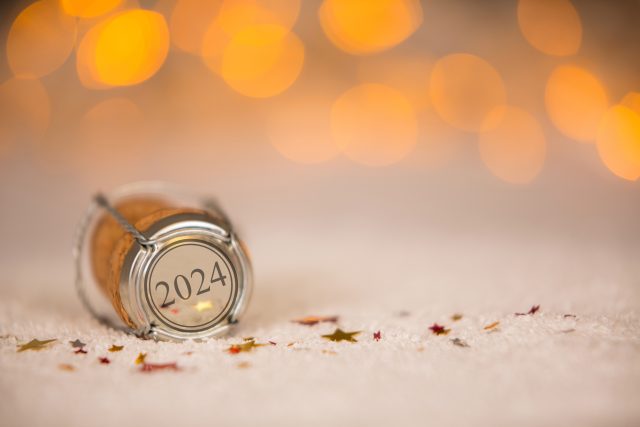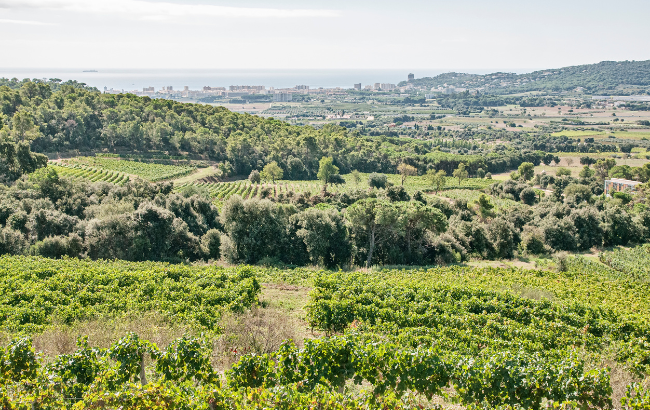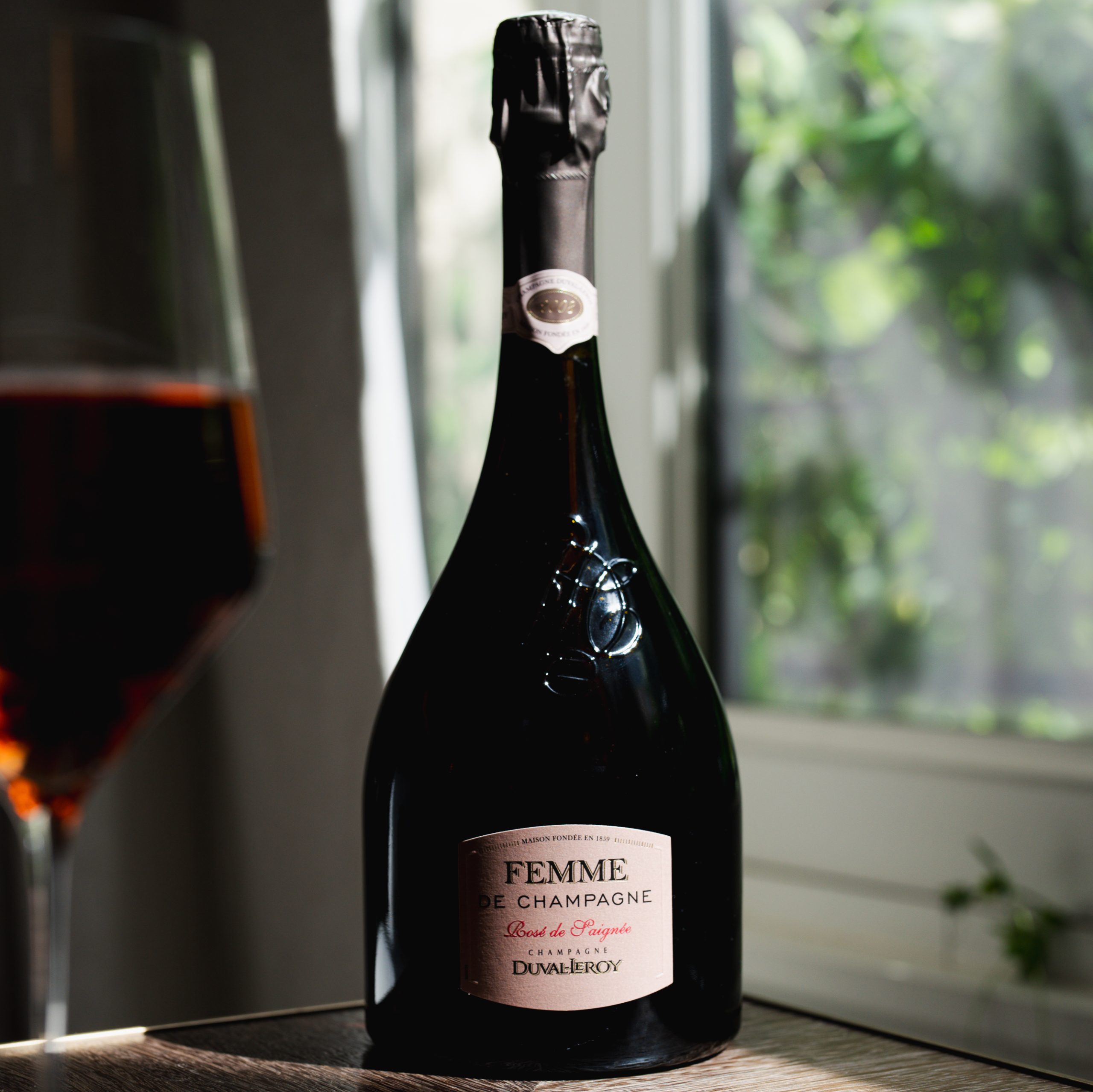Will 2024 see a return to growth for Champagne?
By Patrick SchmittAfter a fall in shipments of Champagne in 2023, Patrick Schmitt MW finds out what the region’s producers think this year has in store for the fine French fizz.

As reported earlier this week, 2023 saw a reversal in Champagne’s fortunes, with a decline of 8% in volumes shipped, compared to the same 12-month period in 2022 – a bumper year for the fizz, driven by what the leading players in the region are calling post-Covid euphoria.
Indeed, the three-year period from 2020 to 2022 has been deemed somewhat anomalous for Champagne, marked by a sharp drop in shipments in 2020 due to the spread of the pandemic worldwide, then a surprising bounce-back in 2021 and a boom in 2022.
In numbers, that meant a dramatic decline in shipments from 297.5m bottles in 2019 to 245m in 2020, followed by a rise to 320m in 2021 and then on to 326m in 2022 – the third highest total in the history of the appellation.
“Covid completely disorganised the production, distribution and consumption of Champagne, then there was artificial growth,” according to sales and marketing director for Champagne Jacquart, Sébastien Briend.
The high-single-digit decline last year meant that 2023’s shipments totalled 298.7m, which was deemed a “disappointment” for many in Champagne – particularly as it dipped below a “symbolic” 300m. Nevertheless, it is also seen by some producers as simply a return to normality for the region, with Champagne back to its pre-Covid size.
Having noted that, 2023 is a better year than 2019 – marginally higher in volume, but significantly greater in value (€6.2 billion vs €5.05bn), with the post-Covid Champagne business repositioned as a more premium one: a result of significant prices increases on the product, as well as a shift to higher-end cuvées, and a greater proportion of sales in countries beyond France, which is generally a lower-value market, relatively speaking. (The volume of shipments in 2023 were split 43% domestic, 57% international).
So what does the performance of Champagne in 2023 mean for this year? Can the region sustain its new place as a higher-priced sparkling wine – and can it grow volumes at the same time?
In terms of volume sales, the region is remaining cautious in its outlook, with Champagne Lanson president François Van Aal telling db last week that the Union des Maisons de Champagne (UMC) are projecting little change in 2024.
“The UMC are being conservative and saying that they think Champagne shipments will be between -1% and +1% in 2024 [compared to last year],” he said.
Continuing, he commented, “The UMC don’t want to send a negative message, nor promise the moon.”
He added, “What they do say is that the stock in the market is not as high as it was in early 2023, and so, if the demand for Champagne is there, the industry should show growth, as there will be more need for shipments.”
For Lanson, Van Aal is relatively bullish, and budgeting for growth, believing that his brand will expand distribution, while retaining its strong foothold in the “resilient” UK market, which accounts for more than 35% of Lanson’s sales by volume.
“We plan to grow through new listings, and my message to our sales team is that we have ambitions to grow, and we have the stock to grow,” he stated.
Another person with high hopes for 2024 is Champagne Joseph Perrier MD Benjamin Fourmon, who thinks that the significant US market – which suffered from too much stock in 2023 – will grow again.
“Even though there is an election [in 2024], I think the US will be better than last year,” he said of shipments to the nation, before suggesting that another major market for Champagne, the UK, could also see growth.
“I think the UK will come back and, as inflation falls, it could be great,” he said, before commenting, “And I’m quite confident in Japan, where depletions are in line with shipments,” suggesting there was little evidence that the market was overstocked as 2024 kicks off.
Generally, although Fourmon believes that the Champagne market “will be more competitive”, he thinks the start of 2024 “will be stronger than 2023, because people are restocking”.
For Groupe Laurent-Perrier chairman Stéphane Dalyac, Champagne’s pre-Covid underlying developments are, he believes, still at work, and hence he hopes that this year will see “exports driving growth and the upper end growing faster than the entry-point.”
As a result, he told db that Champagne is “better off if it is premium-export rather than France-entry.”
One major difference today compared to 2019, however, stems from higher interest rates, which mean that “stock is much more expensive to hold, and therefore clients are wary about stock replenishment because of what it costs.”
Furthermore, as always, he said that “there are black swans that can fly”, mentioning the possible election of Donald Trump as US president in 2024 as one of them, because of the threat of tariffs on Champagne.
Partner Content
“Champagne escaped the tariffs last time, but if he put a 10-50% tax on Champagne, it would kill the market,” he said.
Presently, other figures in the region, such as Champagne Besserat de Bellefon president Nathalie Doucet believes that 2024 “will be better, because the US market is out of stock”.
But Bollinger managing director Charles-Armand de Belenet feels differently. “We are confident in the resilience of the UK market, but the US is much more challenging, because it doesn’t have the same maturity,” he told db. “There has been a fantastic momentum during the last 10 years, but it’s going back to normal, making last year difficult for a lot of Champagne houses, and this year may be difficult too, especially with the uncertainty due to the election,” he added.
Champagne Pol Roger, “which shipped exactly the same number of bottles in 2023 as 2022,” according to president Laurent d’Harcourt, despite at 10% increase in average prices at the start of the last year, also sees strength in the UK consumer’s thirst for Champagne, and is planning to sell more in the market this year.
“We are increasing our allocation for the UK, because this year is the 150th anniversary of the birth of Winston Churchill,” he told db, referring to the great British statesman that Pol Roger had such close ties with.
But when db asked d’Harcourt if he thought overall Champagne sales would increase this year, he said, “If Champagne volumes are bigger in 2024, it will mean the value will go down,” suggesting that producers would have to sell their bottles at a discount to ensure an increase in shipments.
Indeed, much of the concern surrounding Champagne sales in 2024 relates to the price of the product, which went up by 10-12% in 2023 – in part explaining the slowdown in sales – and is increasing again this year.
That’s because of the rising costs of making Champagne, from labour to energy, and most importantly higher interest rates and rising grape prices – the latter up again by 8-10%.
“It’s a very serious issue for Champagne houses,” said de Belenet, who recorded grape prices rising by more than 10% for premiers and grands crus from the 2023 vintage. “It’s a serious challenge regarding the cost of goods,” he continued, because in the current climate, “it will be extremely difficult to have the same increase in Champagne prices as the grape price increase.”
Certainly Van Aal at Lanson admitted to db that his house would be putting up prices by 4-5% this year, “which will not cover the increase in the cost of goods.”
Similarly, Stanislas Thienot, who is the managing director of Arvitis, lamented a 20% increase in grape prices over the past two years, commenting, “We will have to put up prices in 2024, we cannot do nothing, but it will less than the harvest price increase.”
As a result, he has “decided to have a budget for 2024 that is the same in volume as 2023” – a year when sales for the group dropped by almost 20%, mainly due to his decision to discontinue the company’s Champagne Marie Stewart brand in French supermarkets, where it was selling for sub €19.
Elsewhere, Champagne Nicolas Feuillatte CEO Christophe Juarez is revising downwards a forecasted 15% increase in turnover for 2024, which was set last September. However, he still believes that 2024 “will be a little more” than 2023 – referring to shipments in volume and value.
“Is that wishful thinking?” he asked rhetorically. “Perhaps, but 2023 was a sort of turmoil with a lot of our clients overestimating the demand for Champagne – they thought it was booming again – which meant they ordered too much in the first semester and then aggressively slowed down in the second semester, but in 2024, they are ordering more regularly; it will come back to normal business.”
As for areas of growth, he sees that coming from international expansion for Champagne Nicolas Feuillatte as it aims to move from 43% exports to 50% “within two years”, with growth anticipated in the US, Japan, Germany and Italy in particular, as well as the travel retail sector – where he has witnessed “an amazing recovery of the airline business.”
More generally, Champagne Philipponnat president Charles Philipponnat expressed his belief in the strong future for premium brands.
Looking back, he said, “We’ve had a good year commercially,” before adding, “reputable brands – which include good growers – are generally doing well, but anything that doesn’t have added value, a worthy image, is in trouble, and I’m afraid to say, will increasingly be in trouble.”
In his view, “the big challenge will be 2024,” because, following the big increase in prices in 2023, there is another rise coming this year, “and that will be the test”.
He explained, “The pandemic may have gone, but there is no euphoria, it is just the truth we are facing now; and the truth is that high-level Champagne is still attractive at increased prices, but Champagne at the bottom-end is less so.”
It’s why Champagne Charles Heidsieck director Stephen Leroux believes that the long-term focus for the region should be on raising turnover, rather than attempting to increase the number of bottles made, and shipped. “The size of the Champagne market is stuck around a volume of 300m; it can only grow by value and differentiation,” he said.
Read more
Why did Champagne shipments fall by 27m bottles in 2023?
Related news
All the medallists from The Champagne Masters 2025




